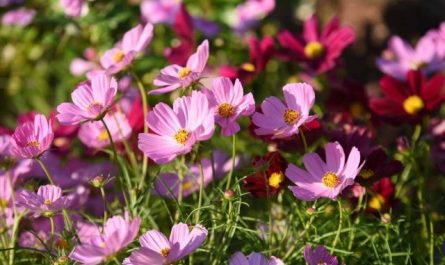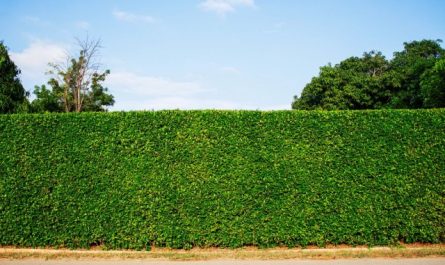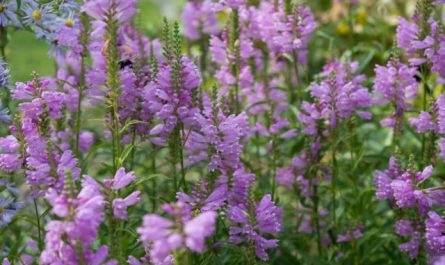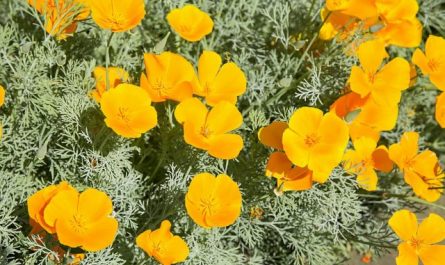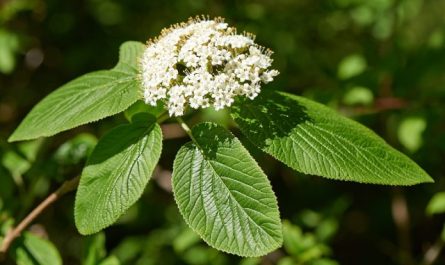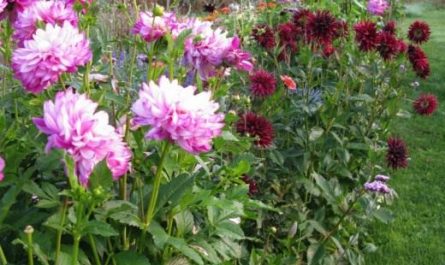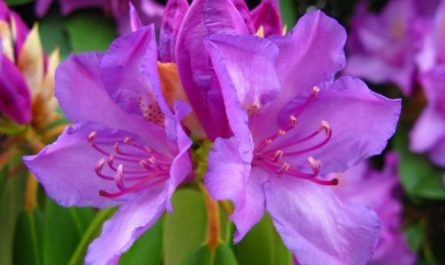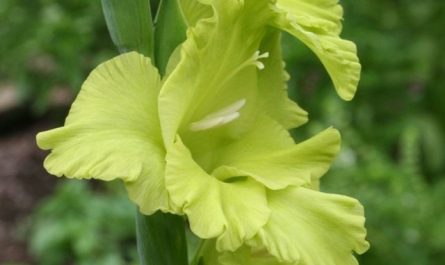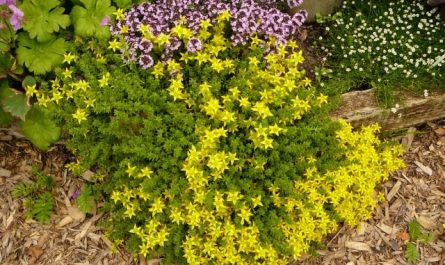What a wonderful time of year it is — spring! It is such an amazing daily joy to see how the trees are covered with a transparent green, golden or pinkish haze, and cheerful green shoots are breaking through last year’s withered grass. Here in Kuban, spring begins in February with a lilac carpet of cyclamens in the forest and a golden rain of blooming hazelnuts. And it continues until the end of May with a consistent and long flowering of a variety of trees. But it turns out that not everyone enjoys this time. Every year, the growing ranks of allergy sufferers are not only unable to enjoy the annual spring miracle, but are also prone to depression due to an affliction called hay fever. Let’s talk about this unpleasantness. And at the same time, about its connection with viral diseases.

What is hay fever?
Actually, hay fever is a type of allergy, an exaggerated response of the body to substances that normally do not cause any negative reaction in people. In the case of hay fever, it is to plant pollen, or rather, to proteins and even to non-protein substances contained in pollen.
The most common manifestation of pollinosis is allergic rhinitis together with allergic conjunctivitis. In recent years, pollen bronchitis and asthma have often been added. However, there are variants of damage to other organs. The longer a person is sick, the more severe the symptoms and the more organs are involved in the disease.
In children, hay fever often “self-liquidates” – very powerful changes occur during the period of growth and, especially, puberty.
If we talk about allergies in general, today the leaders in allergic diseases are the USA, Western European countries, Japan, and Canada. The global market for allergy remedies is already comparable to the market for decorative cosmetics and computer games. According to experts, drug sales and treatment costs will only grow.
At the same time, the market for related products is growing explosively: climate control equipment, hypoallergenic clothing, toys, household chemicals, decorative cosmetics, all kinds of applications for gadgets, food products, and mechanized cleaning products. The number of allergens is expanding every year.
Unfortunately, humanity is moving further and further away from close coexistence with nature towards technogenic existence. Our body is not ready for this, genetic restructuring is a very long process.
Fortunately, research does not stand still and knowledge is becoming more accessible. This means that problems can be solved and, as always, there are many ways: from investing money to changing yourself, here everyone decides for themselves.

Plants that cause hay fever
For most of Russia, three periods of development of pollinosis are characteristic:
- early spring, the period of tree flowering (pollen from hazelnuts, filberts, alders, birches, and oaks is allergenic);
- the beginning of summer, the flowering period of meadow grasses (pollen of timothy grass, orchard grass, fescue, bluegrass);
- the end of summer, the period of flowering of weeds (pollen of wormwood, ragweed, quinoa).
The most allergenic pollen species are listed in brackets, and there are more than 50 known to date.
At the same time, the condition of allergy sufferers can be significantly worsened by the simplest and seemingly unrelated products. For example: carrots, apples, celery, peaches, peanuts, kiwi, soy contain proteins similar to allergenic ones in the pollen of birch, alder, oak, hazel. That is, even if you sit at home, isolating yourself from pollen, but eat apples, the allergy may manifest itself. Or get worse, if it has already begun.
Pears, cherries, sweet cherries, plums, apricots, kiwis, potatoes, eggplants, sweet peppers and nuts have been noted to cause cross-food allergies with birch pollen. The wormwood pollen allergen can cause cross-reactions with ragweed, sunflower, dandelion, coltsfoot and birch pollen allergens. And quinoa and ragweed pollen causes cross-food allergies with beets, spinach, cucumbers, melons and bananas.
You can’t envy allergy sufferers – not only do they have a runny nose and swollen eyes, but they also have almost nothing to eat!
By the way, changing the habitat is not always able to help. Some birch pollen allergens can cause cross-allergy with elm, sycamore, olive, poplar, horse chestnut pollen. And exotic fruits have not been tested for cross-allergy – it is unknown what the danger of consumption is.



Who is to blame?
Well, birches, oaks and hazelnuts are definitely not to blame. There are many theories explaining the rapid growth of allergies and, in particular, hay fever. One of the most common is the hygiene hypothesis. Its essence is that the transition to observing hygiene standards prevents the body from coming into contact with many antigens, which causes insufficient loading of the immune system (especially in children).
Since our body is designed to constantly resist a certain level of threats, the immune system begins to react to harmless antigens. But contact with a variety of microflora and vegetation in childhood is a kind of “vaccination” for the rest of life.
By the way, the allergen-specific immunotherapy (ASIT), which is widespread today, is essentially an antigen vaccination, only it is carried out over a long period of time, starting with minimal doses.
Research shows that allergic diseases are much less common in third world countries than in developed ones. People who have moved from developing to developed countries suffer from immune disorders more often the more time has passed since the move.
In addition to hygienic aspects, a significant reason for the growth of allergies is the uncontrolled use of drugs, especially antibiotics, which actively destroy the established microbiome of our body. It is impossible to restore the microbiome with probiotics – the known lacto- and bifidobacteria make up only 1-5% of the intestinal flora. And in the intestines (advertisements do not lie here) is the majority of our immunity.
Increased consumption (in food products) and use (household chemicals) of chemical industry products is another powerful trigger for the development of allergies.
Acute and chronic stress is the scourge of our time and the enemy of immunity. Hypodynamia is even worse than stress.
The deterioration of the ecological situation also makes its contribution, disrupting the adaptation mechanisms of both people and plants. In particular, instead of forming normal pollen, plants form pollen that is abnormal in shape and structure with a high concentration of heavy metals. The incidence of hay fever in ecologically unfavorable zones is 2-3 times higher than the national average.
And a very important point is the change in the nature of nutrition. Processed products, which today form the basis of the population’s diet, are not able to restore, or even simply maintain, the disturbed intestinal microflora.
That is, it is clear who is to blame, but it remains to be seen what to do?

What to do?
“What to do” logically follows from “who is to blame”. If the greater part of our immunity is provided by the work of the intestinal microflora, it would be right to put the work of the intestines in order. And the most significant help in this can be provided by vegetables, fruits, greens from your own garden and wild plants. Better – fresh, very good – fermented.
Gradually, little by little, so as not to provoke a war between microorganisms in the intestines, but to ensure integration. The more variety, the better. About 300 grams of fresh raw vegetables, fruits and herbs per day or raw and fermented (sauerkraut, soaked apples, tursha) will gradually bring the intestines back to normal.
Children – to the village for the summer! And not to Turkey. Let them train their immune system. Nowadays, renting a house in the village for the summer is not a problem at all. If you have a summer house – to the summer house, and let them live there all summer, eat strawberries, cucumbers, tomatoes and carrots from the garden. Food chemicals should be excluded completely, household chemicals should be limited to the necessary minimum.
Medicines are a scary topic. Now the main allergy sufferers are the antibiotic generation. When antibiotics were considered a panacea and prescribed to everyone, and microbes and bacteria (everything) were considered enemies. Antibiotics for intestinal microflora are like napalm for the Vietnamese jungle – they mow down all living things. And it takes years to restore them to a more or less acceptable level.
However, many medications create an aggressive environment for intestinal microflora. Therefore, it is better to let the cold go away on its own in a week, and not with the use of medications in 7 days. And even more so, do not prescribe any medications to yourself and especially to children on your own.
Movement can be of great help in any (!) treatment. Blood and lymph heal us, bringing what heals and taking away waste. In a lying position, blood and lymph move weakly, there are many stagnant places. It is clear that in this case, lazily moving lymph will not even drag lymphocytes to the right place soon, if at all. Therefore – move: walk, run, jump, pump air into the lungs, dance or rush around the area from morning to night with a hose, hoe and other tools.
You need to learn to cope with stress, everything is very individual: meditation helps some, religion helps others, and it is easier for others to relieve tension in the gym. Summer residents, as a rule, are helped by being on their own plot.
The environmental issue is one of the most painful. It is unlikely that the city’s ecology will be changed, you can only build an ecologically favorable environment in your personal space: in your apartment and on your plot. Plants will help!
Plants that will help
A powerful immune system regulator is purple echinacea, in second place is bergenia crassifolia, in third place is elecampane (although it is contraindicated for those who react to wormwood flowers). Burdock and dandelion rhizomes are also a good remedy for hay fever.
Creeping thyme, oregano, bogbean – it’s a good idea to plant them on the plot and use them regularly. Also, wild pansy, white deadnettle, common self-heal, round-leaved wintergreen can provide significant assistance in regulating immunity.
And weeds – stinging nettle, horsetail – not in the compost, but in a plate or cup, there they will bring more benefit.
It is advisable not to mix everything together, but to try them one by one, since very few types of cross-allergy have been identified and described.

Allergies and viruses
On the one hand, allergy is an excessive immune response of the body, so it seems that the immune system is strong and fights actively. On the other hand, hay fever is a wet nose and wet eyes, to which all passing bacteria and viruses stick with pleasure. In addition, these are inflamed mucous membranes, which are already noticeably more vulnerable, and reduced barrier immunity. The disease worsens the course of the allergy, the allergy worsens the course of the disease.
Light pollen, which is in the air in large quantities, as well as dust in general, serves as a “vehicle” for viruses if someone nearby sneezed or coughed. And this further complicates the situation. If pathogenic bacteria and microbes can be destroyed by phytoncides, then this number does not work with viruses, they are not alive.
It’s better to stay at home during the “polling” period.
Personal observations
I was born and raised in a village in the Moscow region. Surrounded by mixed forests with a huge number of birches. I heard about the existence of allergies when I was studying in Moscow.
I asked our local paramedic about allergies later – and she told me that allergies (and hay fever, that is, pollinosis) do not happen in the village. In the 20th century, there were none.
While living in Komsomolsk-on-Amur in the Khabarovsk region, a purely industrial city, I encountered allergies, including seasonal hay fever, very often among my friends and colleagues.
Now we live in Kuban, in the foothills, where in February in almost every garden, and also along the river and in the forest, hazelnuts bloom and produce dust. The oak-hornbeam forest around also produces dust in the spring. In July-August, ragweed, which has spread all around, blooms and produces dust en masse – who would destroy it here in all the wastelands!
The locals have no allergies to hazelnuts and oak. Allergies to ragweed are now much less common than when the weed first spread across the expanses of Kuban, although there are incomparably more of them now. They have apparently “gotten vaccinated.”
